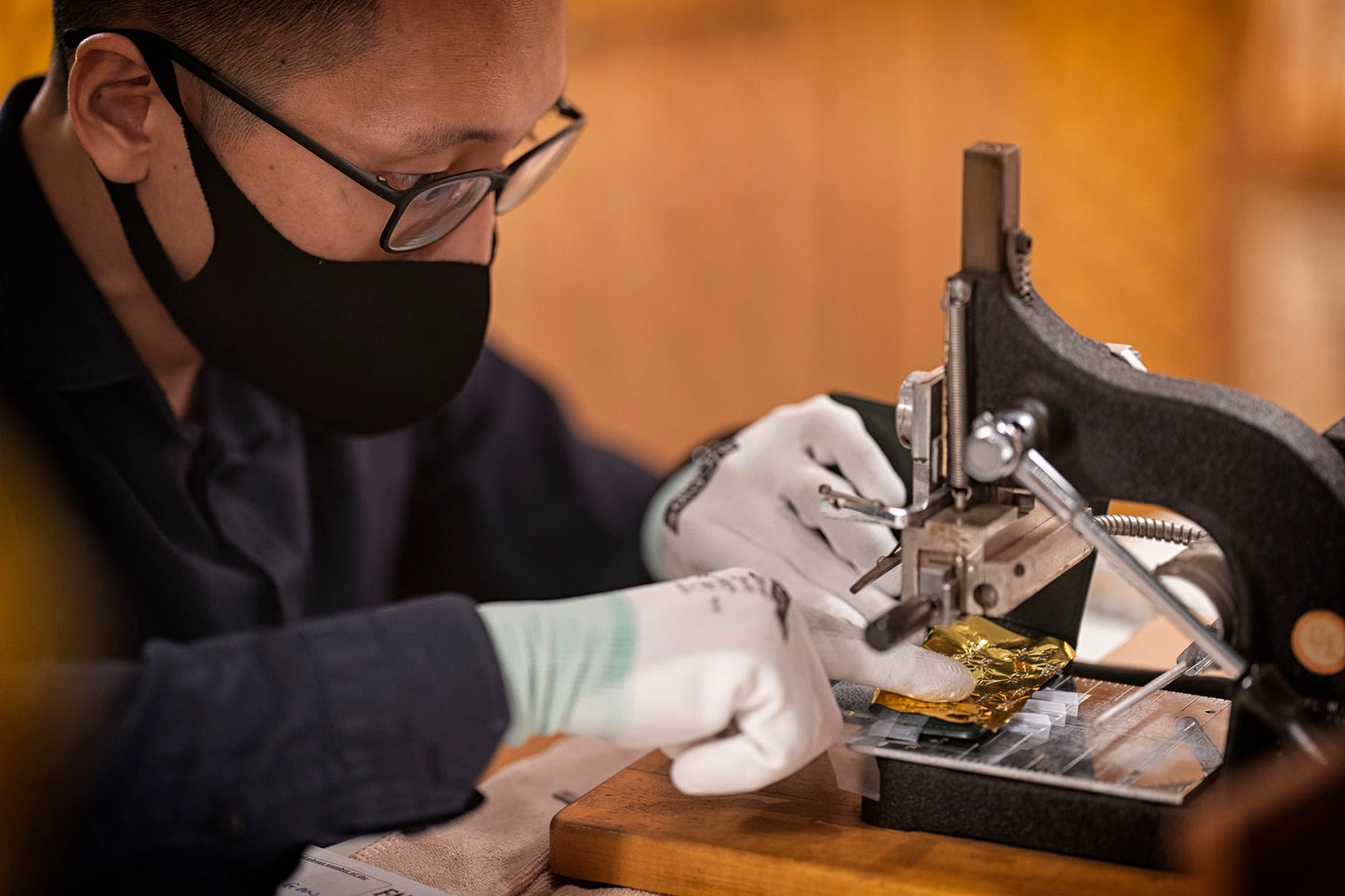Personalisation & Hotstamping
Personalisation & Hotstamping
At Kult Bespoke, we believe that the smallest details make the biggest impact. Our personalisation service transforms everyday items into meaningful keepsakes through artisanal techniques such as hot-stamping, embossing, debossing, and monogramming. Whether it’s initials on a leather accessory, a heartfelt message on a gift, or a brand logo for corporate events, each mark is applied with precision and care.
Personalisation is more than decoration—it’s about creating a story, capturing a memory, and making each piece distinctly yours. Perfect for gifts, events, or personal indulgence, our service ensures every item reflects individuality and craftsmanship.
Find out more from our rate card

Hot stamping, Embossing, Debossing, Monogramming
What are they?

Hot stamping
The hot stamping process includes a hot stamping press, a hot stamping die or type, and sometimes a hot stamping foil if you choose to add color to your impression. The hot stamping press contains a heating element that heats up the die or type; the marking cycle starts when the press engages the heated die or type with the foil and transfers the ink from the foil carrier onto the part to be marked. The press then disengages at the end of the marking cycle leaving behind a crisp, permanent, ink impression on the part.

Embossing / Debossing
Embossing and debossing, the difference is whether it is raised or recessed. Embossing is when you press into the medium from underneath and the text or image is raised. Debossing is when the text or image is imprinted from above to cause a depression or indentation in the medium.

Monogramming
Blind debossing simply means to mark a recessed image without the use of coloured foils. A monogram or wenzel is a motif made by overlapping or combining two or more letters or other graphemes to form one symbol. Monograms are often made by combining the initials of an individual or a company, used as recognisable symbols or logos.

Blind Debossing
Blind debossing simply means to mark a recessed image without the use of coloured foils.

Meet the KING(SLEY)
Kingsley Machine M-60
Made in the 1930’s, the M-60 Kingsley was one of the most iconic hotstamping machine of its time. It features a fully analogue temperature control unit and manual press. Type needed to be manually set, centered, and slotted for heating. It is our mainstay equipment feature which we have multiple units of, and we provide additional machines for high profile events to ensure smooth running and instantaneous replacement in the rare case of a breakdown.
The duration of each print depends on the number of characters. As a ballpark figure, every character will take 30-seconds to set, heat, print, and reset. An 11-character name, for instance "J.P. MORGAN" will take about 5 minutes. Blank spaces and symbols like "." are counted as characters as they add to the time taken for typesetting.

Print Medium
We can print on genuine leather, faux leather, PVC, PU, canvas, velvet, paper, cardboard and wood. For other medium not listed above, contact us for more information.
Item must be a flat plane of uniform thickness, ie. no change in thickness from the top of the text to the bottom of the text, or from the beginning of the text to the end of the text. If one side is thicker than the other, when the press is engaged, the thickest part will be marked, while the thinnest part will not have a clear mark of the die or type.
Items should not be thicker than 3cm.
Suitable items: wallets, luggage tags, labels, book covers, laptop sleeves, key straps, bag straps, and other similar types of products.
Unsuitable items: rounded/puffy balloon bags, bucket bags, uneven surfaces or textures, corners or edges of large items that need to be held down under pressure.

